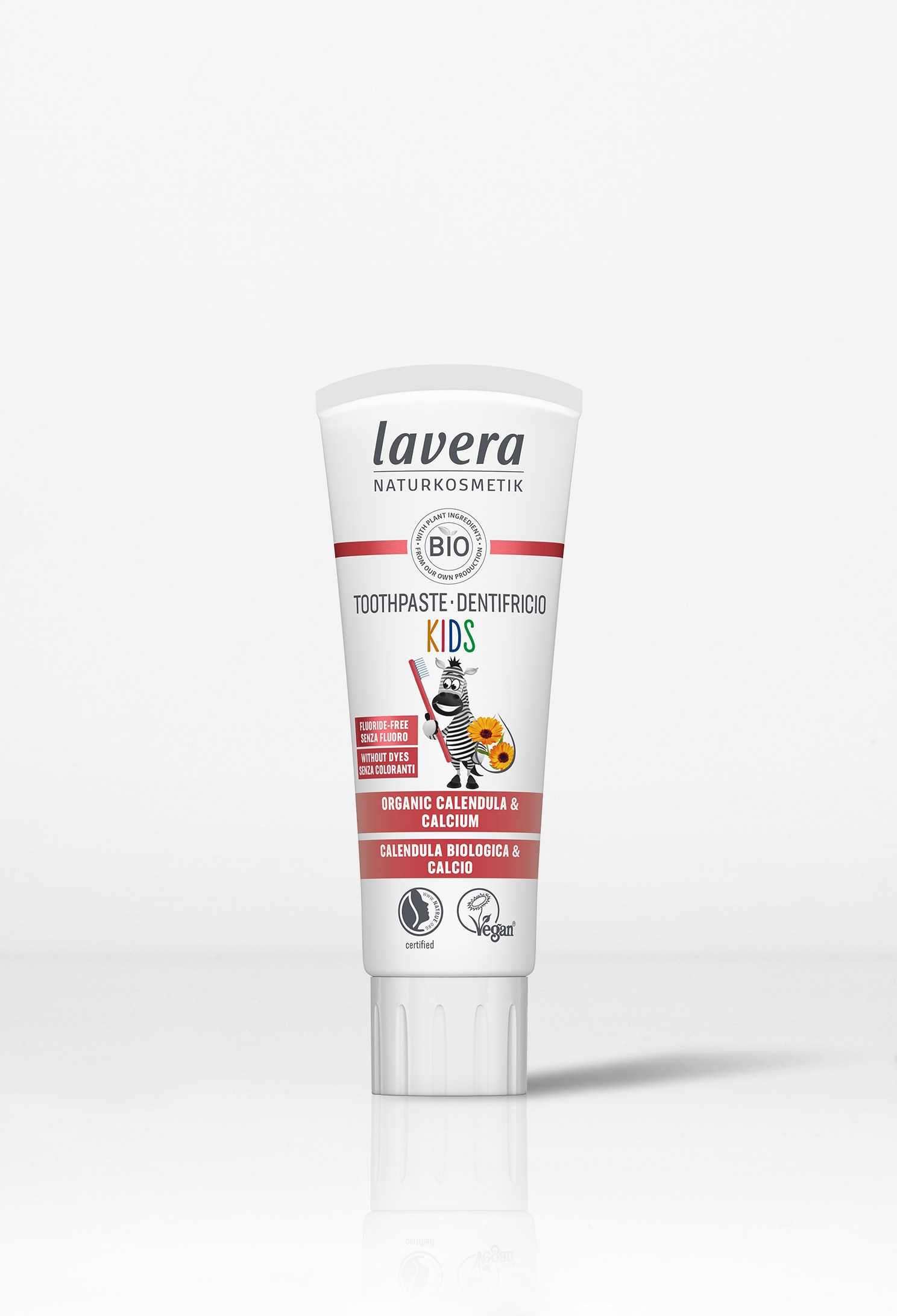In the world of cosmetics, we encounter a variety of ingredients – one of which is titanium dioxide. But what exactly is titanium dioxide and why has it recently been such a highly debated topic in the cosmetics industry? We answer these and other questions and introduce you to our titanium dioxide-free toothpaste in this context.
Date of publication: 2.4.2024

What is Titanium Dioxide?
Titanium dioxide (chemically: TiO2), also known as Titanium Dioxide, is a naturally occurring white mineral in powder form that can whiten or brighten products, thus providing opacity. For this reason, the micropigment is also called titanium white. Millions of tons of this substance are produced worldwide annually, with more than one million tons produced in Europe. Approximately 90% of titanium dioxide is used as a white pigment for the production of (printing) inks, plastics, varnishes, and paper, while the remaining 10% is used, among other things, in cosmetics and pharmaceuticals.
Titanium Dioxide: Where is it Contained?
Until its EU-wide ban as a food additive in August 2022, titanium dioxide was used as a food additive E171 in a wide variety of foods such as sweets (e.g., marshmallows, chocolate lentils, chewing gums), cheese (e.g., mozzarella), light sauces (e.g., salad dressing, mayonnaise), baking ingredients (e.g., fondant, baking decor), or also dietary supplements. The use of titanium dioxide in the chemical industry and also in pharmaceuticals is still permitted - the industry uses the substance as a white pigment PW6, for example, in oil paints, varnishes, plastics, or paper. Titanium dioxide is also used in medications, where it serves as a coating film for pills, among other things.
In cosmetic products such as toothpaste or lip gloss, titanium dioxide (CI 77891) is used as a white pigment. It may also be contained in lipsticks or foundations and concealers, where it provides good coverage and can camouflage irregularities in the skin tone, such as redness or age spots. In sunscreen products, it can be used as a mineral UV filter.


Current Developments: the Ban of Titanium Dioxide as a Food Additive
Is Titanium Dioxide in Toothpaste Harmful?
Function of Titanium Dioxide in Toothpaste
Although titanium dioxide can still be used in cosmetic products, current developments show that many consumers desire titanium dioxide-free alternatives. Therefore, we are actively working on finding adequate substitutes that meet our quality standards. For example, our toothpaste without titanium dioxided or our new sunscreen lotion.
Titanium dioxide is used in toothpaste for two reasons:
- As a whitener: Titanium dioxide is a highly effective white pigment that gives toothpaste a bright white color.
- As an abrasive: As such, it removes plaque and discoloration.
Instead of titanium dioxide, we use substitute ingredients such as sodium bicarbonate, kaolin, chalk (calcium carbonate) oder silica (hydrated silica) in our toothpastes.













